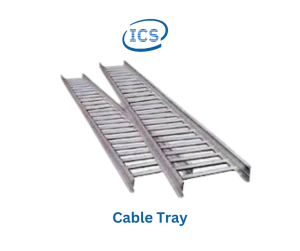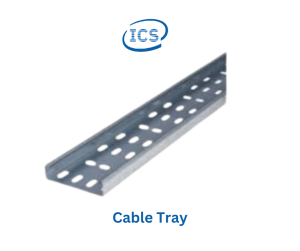Why Investing in Superior Cable Ladders Improves System Reliability
Investing in superior cable ladders is a strategic decision that significantly enhances system reliability across various industries. These robust structures provide organized pathways for electrical and data cables, ensuring safety, efficiency, and scalability in both industrial and commercial settings.
In the realm of electrical infrastructure, the importance of effective cable management cannot be overstated. Cable ladders, also known as cable tray systems, are engineered to support and protect cables, facilitating organized routing and maintenance. By investing in superior cable ladders, businesses can substantially improve system reliability.
Key Benefits of Superior Cable Ladders:
-
Enhanced Cable Protection: Cable ladders provide a structured framework that safeguards cables from environmental hazards such as water, dust, and chemicals, thereby extending their lifespan and reducing failure risks.
-
Efficient Heat Dissipation: The open design of cable ladders allows for optimal airflow around cables, preventing overheating and maintaining performance integrity.
-
Simplified Maintenance: Elevated and organized cables make it easier for maintenance personnel to access, inspect, and replace them, reducing downtime and associated costs.
-
Scalability: Superior cable ladders offer flexibility to accommodate future expansions or modifications, supporting additional cables without significant structural changes.
-
Cost-Effectiveness: Compared to other wiring methods, cable ladders can reduce installation labor and material costs due to increased cable fill capacity and longer support spans.
-
Improved Safety: By organizing cables neatly and off the ground, cable ladders minimize tripping hazards and potential electrical accidents, ensuring a safer working environment.
-
Compliance with Standards: High-quality cable ladders are designed to meet industry standards, ensuring that installations adhere to safety and performance regulations.
-
Corrosion Resistance: Superior cable ladders are often constructed from materials like galvanized steel or fiberglass, offering resistance to corrosion and suitability for various environments.
-
Load-Bearing Capacity: Engineered to support substantial weight, these ladders can handle large bundles of cables, making them ideal for industrial applications.
-
Versatility: Cable ladders are adaptable to different settings, including industrial plants, commercial buildings, and high-risk environments, providing reliable cable management solutions across sectors.
-
Easy Installation: The design of cable ladders facilitates straightforward installation, reducing labor time and costs associated with complex wiring systems.
-
Aesthetic Organization: Beyond functionality, cable ladders contribute to a clean and organized appearance, which is particularly beneficial in commercial settings where aesthetics matter.
-
Fire Safety: Certain cable ladders are designed with fire-resistant materials, enhancing safety in environments where fire hazards are a concern.
-
Environmental Adaptability: Superior cable ladders can be customized to withstand specific environmental challenges, such as extreme temperatures or chemical exposure, ensuring durability and reliability.
-
Reduced Electromagnetic Interference (EMI): Properly organized cables in a ladder system can minimize EMI, ensuring the integrity of data transmission and reducing signal loss.
Specifications Table:
| Specification | Details |
|---|---|
| Material | Galvanized Steel, Stainless Steel, Aluminum, Fiberglass |
| Width Range | 100 mm to 900 mm |
| Height Range | 50 mm to 150 mm |
| Length per Section | Typically 3 meters |
| Rung Spacing | 150 mm to 300 mm |
| Load Capacity | Up to 200 kg/m (varies by design and material) |
| Finish | Hot-Dip Galvanized, Powder Coated, Pre-Galvanized |
| Temperature Resistance | -40°C to +150°C |
| Corrosion Resistance | High (depending on material and finish) |
| Fire Resistance | Fire-retardant options available |
| Ventilation | Open design for optimal airflow |
| Compatibility | Suitable for power, data, and control cables |
| Installation Environment | Indoor and Outdoor |
| Compliance | Meets NEMA VE 1, IEC 61537 standards |
| Accessories | Bends, Tees, Crosses, Reducers, Covers, Brackets |
Product FAQs:
-
What are cable ladders used for?
- Cable ladders are used to support and organize electrical and data cables in various settings, ensuring safe and efficient cable management.
-
How do cable ladders improve system reliability?
- By providing structured support and protection, cable ladders prevent cable damage, facilitate maintenance, and enhance overall system performance.
-
What materials are cable ladders made from?
- Common materials include galvanized steel, stainless steel, aluminum, and fiberglass, each chosen based on specific environmental and load requirements.
-
Can cable ladders be used outdoors?
- Yes, many cable ladders are designed with corrosion-resistant materials suitable for outdoor installations.
-
Are cable ladders customizable?
- Yes, they come in various sizes and configurations and can be tailored to meet specific project needs.
Why Choose Superior Cable Ladders:
Investing in superior cable ladders ensures that your cable management system is robust, scalable, and compliant with industry standards. The benefits of enhanced safety, reduced maintenance costs, and improved system reliability make them a prudent choice for any organization seeking to optimize its electrical infrastructure.
|
|
|
|



